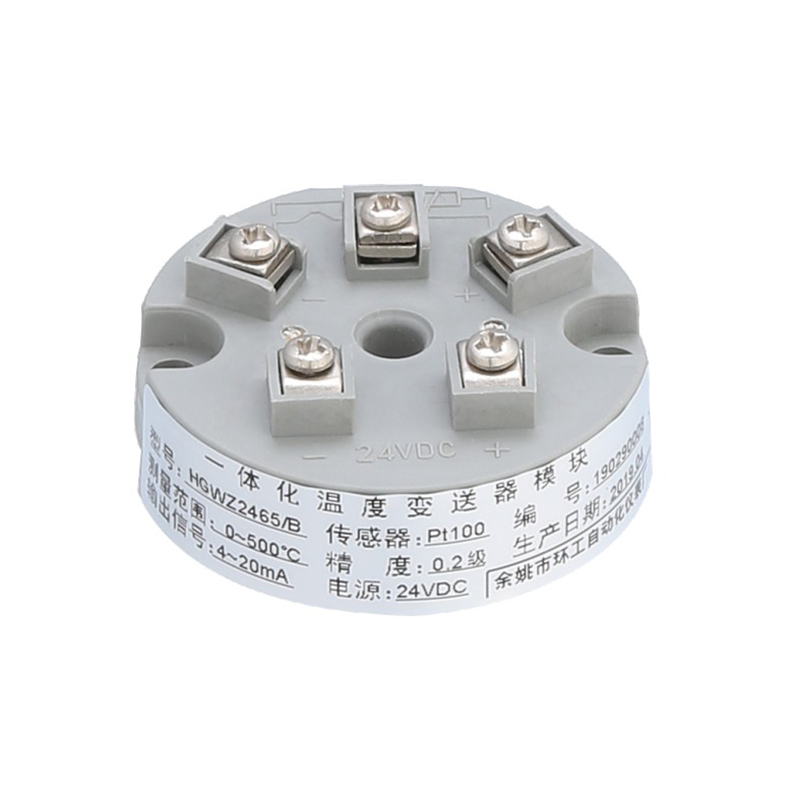The handling of long-distance signal transmission in temperature transmitters without compromising accuracy involves several considerations and features. Here are some key points:
Signal Conditioning: Within temperature transmitters, advanced signal conditioning techniques are employed to meticulously prepare the temperature signal for long-distance transmission. Amplification, a process of boosting the strength of the signal, is implemented to counteract any signal weakening that may occur over extended distances. Simultaneously, filtering mechanisms are utilized to meticulously eliminate undesirable noise and interference, ensuring that the transmitted signal maintains its precision and stability throughout its journey.
Current Loop Communication: The adoption of a current loop communication system, exemplified by the widely used 4-20 mA standard, serves as a strategic choice. This current loop configuration is inherently resilient to voltage drops along transmission lines, a common challenge in lengthy cable setups. By employing a current loop, the transmitter delivers a signal where variations in current directly correspond to changes in temperature, offering a robust and reliable means of conveying accurate temperature information.
Shielding: The incorporation of shielded cables is a proactive measure against the pervasive threat of electromagnetic interference. These cables are designed with shielding layers to act as an impervious barrier, shielding the temperature signal from external electromagnetic fields. This fortification ensures that the transmitted signal remains untainted by induced noise, safeguarding the integrity and accuracy of temperature data in the face of potential external disturbances.
Low-Impedance Output: A critical facet of temperature transmitter engineering involves configuring the device with a low output impedance. This deliberate design choice is aimed at mitigating the impact of cable resistance on the transmitted signal. By maintaining a low impedance, the transmitter guarantees that the signal's quality and fidelity are upheld, even when navigating the considerable lengths of transmission cables in industrial settings.
Voltage Compensation: In addressing the challenge of voltage drops over extended transmission distances, certain temperature transmitters boast sophisticated voltage compensation mechanisms. These mechanisms dynamically adjust for variations in voltage along the transmission lines, ensuring that the received signal faithfully reflects the actual temperature at the source. This meticulous compensation process is indispensable for preserving the accuracy and precision of temperature readings.
High-Quality Components: At the heart of every reliable temperature transmitter are high-quality electronic components and precision-engineered circuitry. The conscientious selection of superior materials and components contributes significantly to the overall robustness, reliability, and longevity of the transmitter in demanding industrial environments. This commitment to quality underpins the device's capability to consistently deliver accurate temperature measurements.
Calibration and Linearization: The meticulous calibration processes and sophisticated linearization algorithms implemented in temperature transmitters play a pivotal role in maintaining accuracy. Calibration acts as a corrective measure, rectifying any deviations introduced during the signal transmission process. Concurrently, linearization ensures that the temperature readings remain in precise correspondence with the actual physical temperature, even after traversing extensive cable lengths. This tandem approach guarantees the fidelity of temperature data throughout the transmitter's operational lifespan.
Remote Sensing: The incorporation of remote sensing capabilities represents a strategic advancement in temperature transmitter technology. By enabling the transmitter to measure the voltage at the sensor's location, remote sensing serves as an intelligent mechanism to counteract voltage drops along transmission lines. This adaptive approach ensures that the received signal accurately mirrors the temperature conditions at the source, contributing to an elevated level of accuracy and reliability in temperature measurements.
HGWZ2465 temperature transmitter


































































 English
English русский
русский














